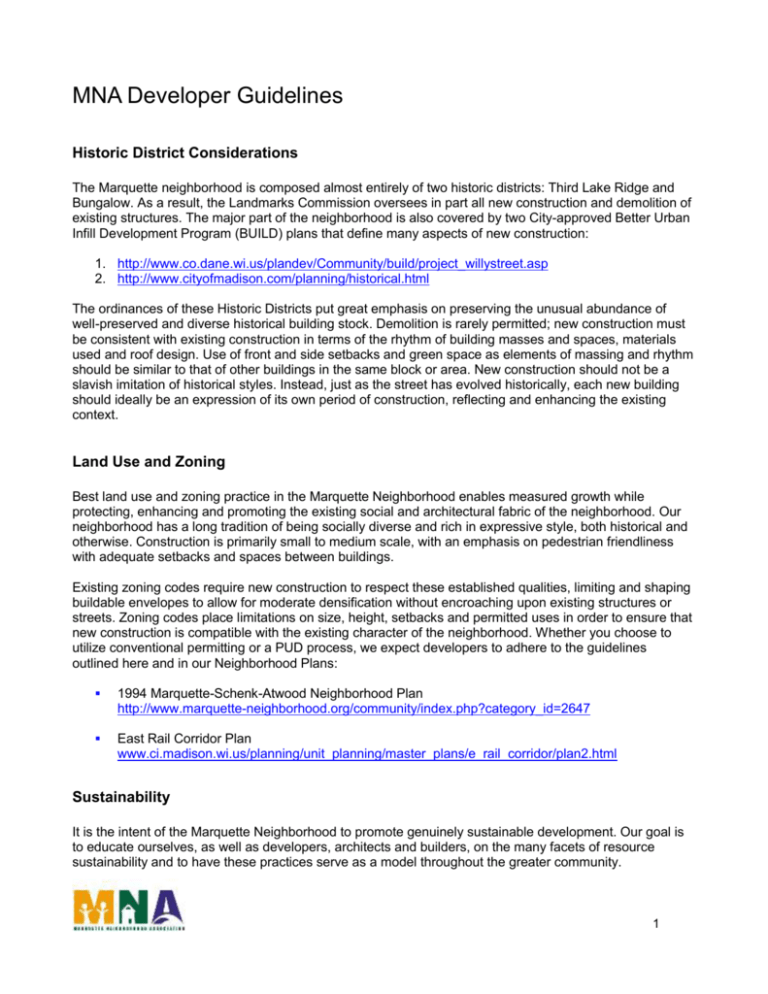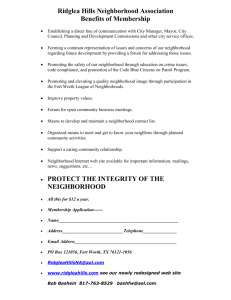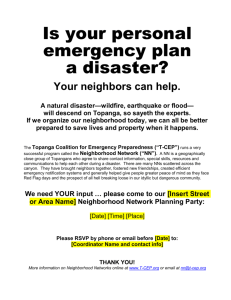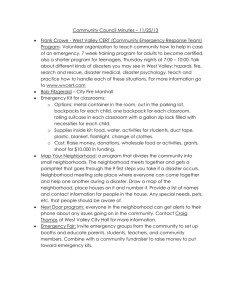MNA Developer Guidelines
advertisement

MNA Developer Guidelines Historic District Considerations The Marquette neighborhood is composed almost entirely of two historic districts: Third Lake Ridge and Bungalow. As a result, the Landmarks Commission oversees in part all new construction and demolition of existing structures. The major part of the neighborhood is also covered by two City-approved Better Urban Infill Development Program (BUILD) plans that define many aspects of new construction: 1. http://www.co.dane.wi.us/plandev/Community/build/project_willystreet.asp 2. http://www.cityofmadison.com/planning/historical.html The ordinances of these Historic Districts put great emphasis on preserving the unusual abundance of well-preserved and diverse historical building stock. Demolition is rarely permitted; new construction must be consistent with existing construction in terms of the rhythm of building masses and spaces, materials used and roof design. Use of front and side setbacks and green space as elements of massing and rhythm should be similar to that of other buildings in the same block or area. New construction should not be a slavish imitation of historical styles. Instead, just as the street has evolved historically, each new building should ideally be an expression of its own period of construction, reflecting and enhancing the existing context. Land Use and Zoning Best land use and zoning practice in the Marquette Neighborhood enables measured growth while protecting, enhancing and promoting the existing social and architectural fabric of the neighborhood. Our neighborhood has a long tradition of being socially diverse and rich in expressive style, both historical and otherwise. Construction is primarily small to medium scale, with an emphasis on pedestrian friendliness with adequate setbacks and spaces between buildings. Existing zoning codes require new construction to respect these established qualities, limiting and shaping buildable envelopes to allow for moderate densification without encroaching upon existing structures or streets. Zoning codes place limitations on size, height, setbacks and permitted uses in order to ensure that new construction is compatible with the existing character of the neighborhood. Whether you choose to utilize conventional permitting or a PUD process, we expect developers to adhere to the guidelines outlined here and in our Neighborhood Plans: 1994 Marquette-Schenk-Atwood Neighborhood Plan http://www.marquette-neighborhood.org/community/index.php?category_id=2647 East Rail Corridor Plan www.ci.madison.wi.us/planning/unit_planning/master_plans/e_rail_corridor/plan2.html Sustainability It is the intent of the Marquette Neighborhood to promote genuinely sustainable development. Our goal is to educate ourselves, as well as developers, architects and builders, on the many facets of resource sustainability and to have these practices serve as a model throughout the greater community. 1 Marquette Neighborhood Association Developer Guidelines We value all levels of sustainability from the practice of preserving, rehabbing, or adaptive reuse of existing building stock, through the careful consideration of other issues such as lifecycle costing, latent energy and water consumption, recyclability, impact of toxic materials and processes, CO2 generation, ozone depletion and waste generation. We welcome the principals of LEED, Green Built Home and others, and seek to incorporate, to a reasonable degree, these principles into new and remodeled construction in the Marquette Neighborhood. Affordability For both residential and commercial property it is important to build space that is affordable for the greatest possible range of incomes. For new residential projects, besides the city inclusionary zoning requirements, the neighborhood has its own affordability plan for both rental and home-ownership property. This plan is designed to guarantee that any new residential construction is accessible to the same income distribution as exists in the city as a whole. (Please find attached affordability schedules for both rental and ownership property.) In addition, the Marquette Neighborhood has a particular need for family size units (3-4 bedrooms) that are affordable to a broad range of households. Unit Size – Residential Development For residential property development, it is important in general to provide a mixture of unit size, particularly in terms of number of bedrooms, from efficiency to 4 bedroom. The exact range for a given project will depend in part on its location. For example, for projects within walking distance of schools, it is important to include units that can accommodate families with children. Economic Development Key objectives of the Marquette neighborhood plan are to: Expand the supply of living-wage jobs available to neighborhood residents. Retain vital streets, including a thriving commercial corridor that supports a diverse mix of retail and services. Ensure that local businesses and entrepreneurs can afford to remain in the neighborhood. Ensure that neighborhood services, jobs and shopping are in close proximity. We view developers as partners in working to accomplish these objectives. Specifically, we urge developers to: Work in close cooperation with MNA and other implementation groups to ensure that development plans are aligned with the neighborhood’s economic development objectives. Design flexible spaces that can accommodate as many uses as possible, as specified In the BUILD II recommendations. Assess the neighborhood market’s needs and consider these closely in developing project plans. 2






